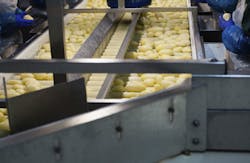The global market for pneumatic conveying systems is expected to be worth $30.67 billion by 2022, a 50 percent increase from $20.3 billion in 2014.
A new report from Grand View Research identifies several factors that are driving the market, including rapid industrialization coupled with the growing need to achieve energy efficiency. Rising demand for material handling equipment in many industries. Growing health and safety concerns. Pneumatic conveying systems offer better hygiene and can prevent contamination of end products. The need to minimize production and maintenance costs and increase productivity. Continuous technological advancements, with the development of cost-effective and innovative solutions.
Pneumatic conveying systems move bulk materials from A to B and are used in industries ranging from pharmaceuticals and food processing to ceramics, plastics, construction, agriculture, electronics, aerospace and packaging.
Pharmaceuticals and the food industry collectively accounted for more than 50 percent of the overall market in 2014 and this may rise over the coming years. The report highlighted growing adoption of pneumatic conveyors in pharmaceutical facilities for staging, granulation, blending, coating, compression and packing.
Growth is also anticipated in the ceramics industry, where pneumatic conveyors are used throughout the production process to supply granulators and dry glazing machines, micronized materials, conveying glazes and pigments in the press department.
Looking at the different types of pneumatic conveying systems available, positive pressure technology is expected to account for a majority of the market over the forecast period because of its ability to operate at a relatively high pressure as compared with other types. This type of system is preferable for transporting heavy materials over a longer distance.
Vacuum-based technology utilizes a vacuum created in conveying lines in order to pull the material towards loading points. This may also hold significant market share and show strong growth over the next few years, Grand View Research said.
Moderate growth is expected to be seen for combination equipment, which incorporates pressure to convey multiple unloading points as well as vacuum to convey materials from multiple loading points.
